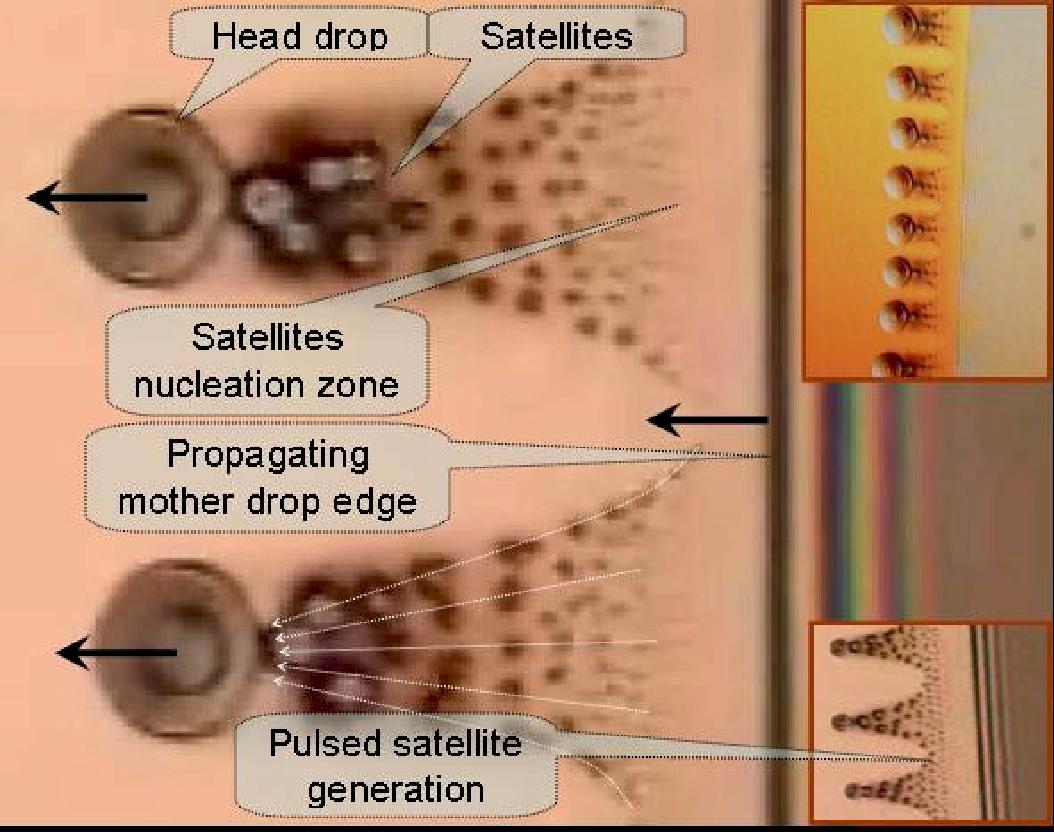or
Life of an octopi
Phys. Rev. Lett. 93, 186101 (2006)

The figure shows a snapshot of a novel type of instability, which occurs when an IPA (isopropyl alcohol) drop spreads on a silicon surface. As a (mother) drop of IPA is deposited on the surface, it spreads and, while spreading, ejects some fluid ahead of its front. At some distance from the film edge the ejected fluid, initially structureless, nucleates small drops, which grow and accelerate their motion along the paths traversed by the fore-heading drops, arranging into periodic structures all around its perimeter. We nicknamed these structures ‘octopi’ since its large head drop appears as octopus body and streams of satellite drops as tentacle arms. Preserving its global shape, each ‘octopus’ actually exhibits a complicated dynamically active internal structure: the large head drop is followed by a cascade of growing and merging faster moving satellite drops, which eventually catch up and coalesce with the head drop, replenishing its mass and kinetic energy losses.
Click on the image (or here for mpeg format) to see a real time movie showing the dynamics. This movie concentrates on the spreading (expanding) portion of the drop evolution and the camera follows the position of the front. We see that the head drops move with the speed of the front and can also clearly observe the relatively faster motion of the (smaller) satellite droplets that eventually merge with the head drop. Newton interference fringes, reflecting film thickness variation near the film edge are clearly visible at the drop front.
At the beginning of the second movie (mpeg is here) we see that the octopi - like patterns form all around the perimeter of the spreading drop. This movie includes also the later stage of drop and octopi evolution when drop fronts retreats. This is a period of strong evaporation. Towards the end of the evolution we observe the drying stage when the drop front retreats and the head drops slowly evaporate. The head drops do not retreat with the front, showing that there is no physical link between the head drops and the drop itself (aside from the satellite drops which propagate from one to the other). At few occasions, one can also see interaction of the drop with impurities on the surface.
The patterns observed during spreading of pure alcohol inspired new sets of experiments, carried out by Nebo Murisic (currently at UCLA) at NJIT. We found that the drop front was still unstable, but the nature of instability changes and the patterns that form are of mushroom shape with `stem' connecting the mother drop and head drops. This research continues and new results will be posted here as they become available.
The movie presented at the Annual Meeting of American Physical Society, Division of Fluid Dynamics 2008 is here.